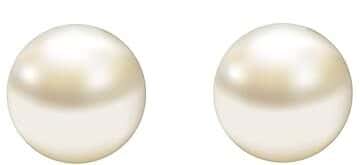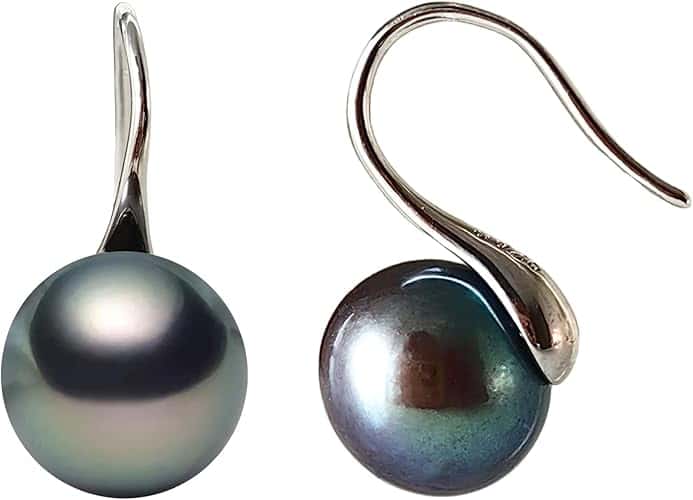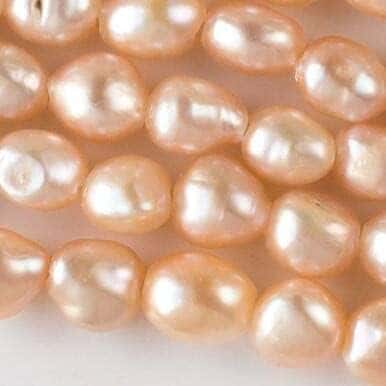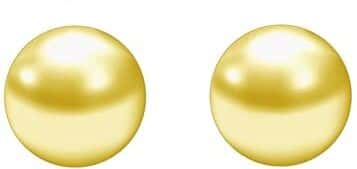Pearls are timeless treasures that have captivated people for centuries with their natural beauty and elegance. But did you know that pearls come in a variety of colors, each with its own unique meaning and charm? From the classic white pearls to the exotic black and peacock pearls, each hue tells a story and adds a special touch to jewelry.
In this blog, we’ll explore the fascinating world of pearl colors, uncovering the symbolism and allure behind each one. Whether you’re looking for a pearl to match your style or simply want to learn more about these gems of the sea, read on to discover the perfect pearl for you.
(Classic Pearl Colors)
White Pearls
Often considered the classic pearl, white pearls are typically produced by Akoya oysters, South Sea oysters, and some freshwater mollusks. They symbolize purity and elegance, making them a popular choice for bridal jewelry and formal occasions.

Black Pearls
These striking pearls are primarily produced by the black-lipped oyster found in French Polynesia. Known as Tahitian pearls, their color ranges from dark green to black with iridescent overtones of blue, green, or purple. Black pearls symbolize mystery and sophistication.

(Exotic Pearl Colors)
Golden Pearls
Harvested mainly in the Philippines and Indonesia, golden pearls are produced by the gold-lipped variety of the South Sea oyster. They range from pale champagne to deep gold and symbolize wealth, prosperity, and wisdom.

Pink and Peach Pearls
Commonly found in freshwater pearls, these colors range from soft pink to deep peach. They symbolize romance and femininity and are popular in fashion jewelry.

Lavender Pearls
Another color typically found in freshwater pearls, lavender pearls offer a unique and modern twist to traditional pearl jewelry. They symbolize creativity and originality.

Blue Pearls
Rare and often produced by Akoya oysters, blue pearls range from light to dark blue and can have silver overtones. They symbolize tranquility and calmness.

(Rare and Unique Pearl Colors)
Chocolate Pearls
Originally dyed, but now naturally occurring, chocolate pearls are produced by some varieties of black-lipped oysters. They offer a unique and modern look, symbolizing indulgence and richness.
Green and Multicolor Pearls
Primarily from Tahitian oysters, these pearls display a range of colors, often with green as a dominant hue. They symbolize nature and diversity.

(Additional Pearl Colors)
Silver Pearls
Produced mainly by South Sea and Akoya oysters, silver pearls have a sleek, metallic sheen. They symbolize modernity and elegance and are often favored for their versatile and sophisticated look.
Cream Pearls
Found in Akoya and freshwater pearls, cream pearls offer a warm and classic appearance. They symbolize tradition and understated elegance, making them suitable for timeless jewelry pieces.

Peacock Pearls
Characterized by a dark body color with iridescent overtones of green, blue, and purple, peacock pearls are mainly Tahitian. They symbolize beauty and mystery, offering a dramatic and exotic look.

Yellow Pearls
Produced by freshwater and South Sea oysters, yellow pearls range from light lemon to rich mustard hues. They symbolize happiness and positivity, adding a cheerful touch to jewelry.

Purple Pearls
Purple pearls, usually found in freshwater varieties, come in shades from light lilac to deep violet. They represent royalty, luxury, and creativity, offering a unique and striking option for jewelry.

(Factors Affecting Pearl Color)
Mollusk Species
- Different types of mollusks (like oysters and mussels) produce different colors of pearls. For example, black-lipped oysters produce black pearls, while white-lipped oysters produce white pearls.
Water Conditions
- The conditions of the water where the mollusks live can change the color of the pearls. Factors like water temperature, salt levels, and cleanliness all play a role. Cleaner water often leads to brighter and more beautiful pearls.
Nacre Thickness
- Nacre is the shiny layer that mollusks create around a pearl. Thicker nacre can make the pearl’s color look deeper and richer. Thin nacre might make the pearl look dull.
Pearl Treatment
- Sometimes, pearls are treated to change or enhance their color. This can include bleaching to make them whiter, dyeing to add color, or irradiation to change their natural color. These treatments can make pearls look different from their natural state.
In conclusion, the many colors of pearls each offer their own special beauty and meaning. Whether you love the timeless look of white pearls, the exotic charm of black and peacock pearls, or the sleek style of silver and chocolate pearls, there is a pearl for everyone and every occasion. Embrace the history and meaning behind each color, and find the perfect pearl that matches your personality. Explore the world of pearls and discover the one that speaks to you.



